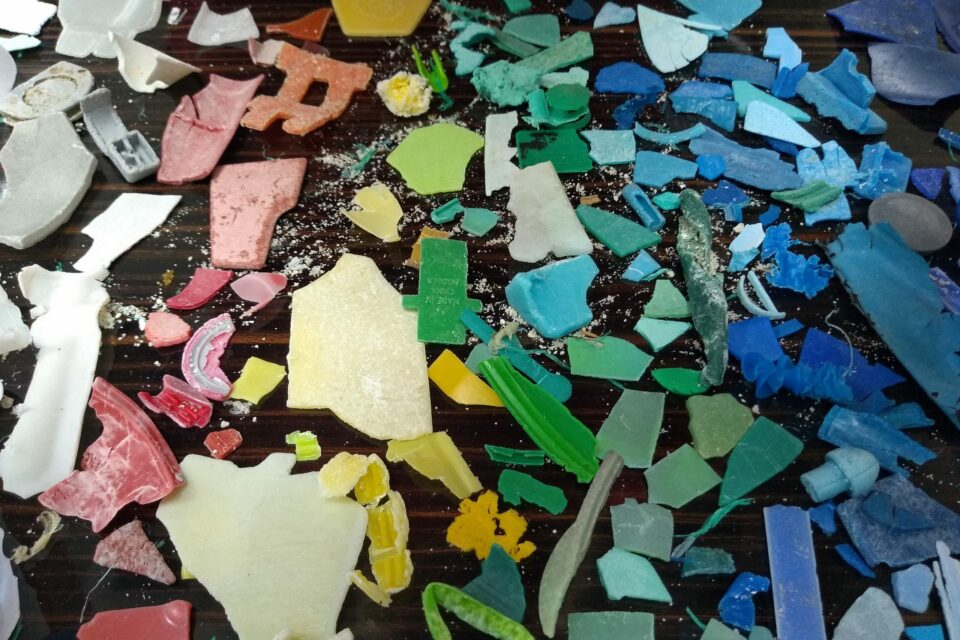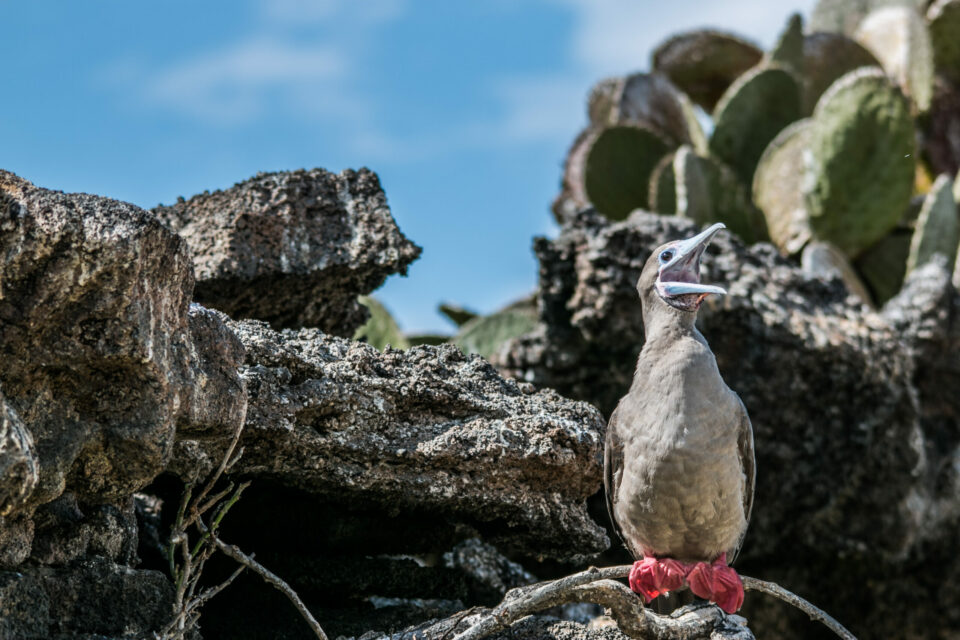

Investigating plastics in Galapagos – macroplastics
The distribution of macroplastics around the Galapagos Archipelago raises a number of questions about the sources of the plastic pollution that we find on the Islands.
Nick and Mollie, two graduate volunteers, are currently undertaking initial research into plastics around the Galapagos Islands with support from, and in order to inform, GCT’s larger Marine Plastics Programme. Their previous blog covered initial surveying work for microplastics in fish within the Marine Reserve and how this will help inform future conservation strategies. This week’s blog, written by Mollie Gupta, covers the pair’s first investigations into macroplastics throughout Galapagos, detailing some of their findings and next steps.
The craggy coastline of the Galapagos Archipelago spans an impressive 1,036 miles. Eighteen large islands contribute to this length, and when imagining the beaches of Galapagos, many of us picture pristine sandy banks or harsh volcanic strata littered with sea lions, marine iguanas and swooping frigatebirds. Sadly, something is missing from this picture: plastic. Despite being 600 miles from the closest land mass, Galapagos has not been able to escape plastic pollution.
The presence of plastics on the Galapagos Islands is currently something of a mystery. Galapagos attracts thousands of tourists, many of whom are environmentally-conscious, visiting to experience the Islands’ beauty. As the majority of Galapagos is National Park land, guides must be present to supervise tours and they work hard to ensure that no pollution is left behind following group visits to beaches and rocky coasts. Galapagos also contains a population of around 30,000 residents who are proud of the Islands and care about the cleanliness of their home.
It seems that plastic pollution is not spread evenly across Galapagos. The Islands contain many types of coastline, ranging from low-energy waves lapping at white sandy beaches to rough, high-energy waves pounding coastlines saturated with black volcanic boulders. Different beaches experience different levels of tourism depending on their isolation and ease of access. Yet some of the most isolated islands contain as much plastic as those with high levels of tourist traffic.
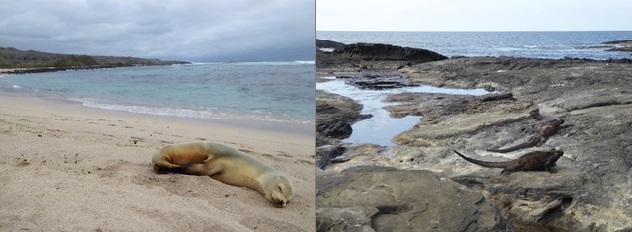
The varying coastline of Galapagos. Left: San Cristobal, Right: Santiago © Mollie Gupta
This raises some questions! First, are there patterns in the quantity and type of plastic pollution found across different locations? Do these patterns coincide with tourism, or the physical characteristics of beaches, or both? Could these patterns point towards why this is happening, and therefore ways to help prevent the future deposition of plastic on the coast? Though there is a long way to go before we are able to answer these questions, some first steps are being made.
Each autumn, a research team consisting of scientists and National Park guides embark on an expedition across Galapagos, carrying out surveys to collect data for a variety of projects. One such survey involves a researcher collecting as much plastic as possible from a random point on the beach for a period of five minutes. Along with recording the GPS location, beach gradient, rock type, shore type and more, this allows a profile of the type of coast and sort of plastic present to be built for each site visited and surveyed.

Plastic bottles collected all from a single beach within a five minute period. These include soft drink and milk bottles milk bottles, and cooking and motor oil containers © Mollie Gupta
As part of our volunteer work with the Galapagos Science Center and with the support of GCT, we have been scrutinising these plastic items collected from beaches across the entire Archipelago. Referred to as ‘macroplastics’ because of their large size (bigger than 1cm2 and visible to the naked eye), these have so far included everything from plastic bottles, bags and pieces of rope, to flip flops, hair combs and toothbrushes. We record the size, colour, purpose and type of plastic for every item collected. For items which still have legible labels, we are also able to record the manufacturer, brand and commercial owner of the product, along with expiry dates and country of production. Together, this information can be used to attempt to reconstruct the approximate age and approximate route that piece of plastic has taken to reach the shores of Galapagos.
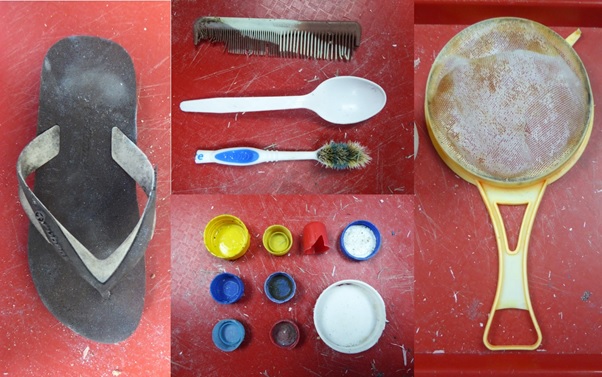
Examples of some of the plastics that have been found and processed as part of our volunteer work © Mollie Gupta
Currently it is incredibly hard to decipher whether the plastic found in Galapagos is arriving on currents from mainland South America, or is instead caused by local littering. While there are plans to examine how international currents and internal currents contribute towards the movement of plastic through the Archipelago, for now our data set will be able to reveal what type of plastic products account for the most pollution, who is manufacturing those products, how old they are, and which sites are suffering the most.
The ultimate goal is a plastic-free Galapagos. The information collected as part of our volunteer work is vital to identifying who may be commercially responsible for plastic waste and directing efforts to reduce future plastic pollution, as well as ensuring that tourism continues to benefit the Islands. The more we learn about the geographic origin of plastic and which areas of the Archipelago are most at risk, the closer we step towards this goal. Until then, each one of us can remain conscious about how we use plastic in our daily lives and consider how often we reuse and recycle every-day items. Together, we can be powerful in turning the tide against plastic pollution in our oceans.
If you would like to help us on our mission to make Galapagos plastic-free then please donate here.
Related articles


New research shows that Galapagos giant tortoises are ingesting plastic waste
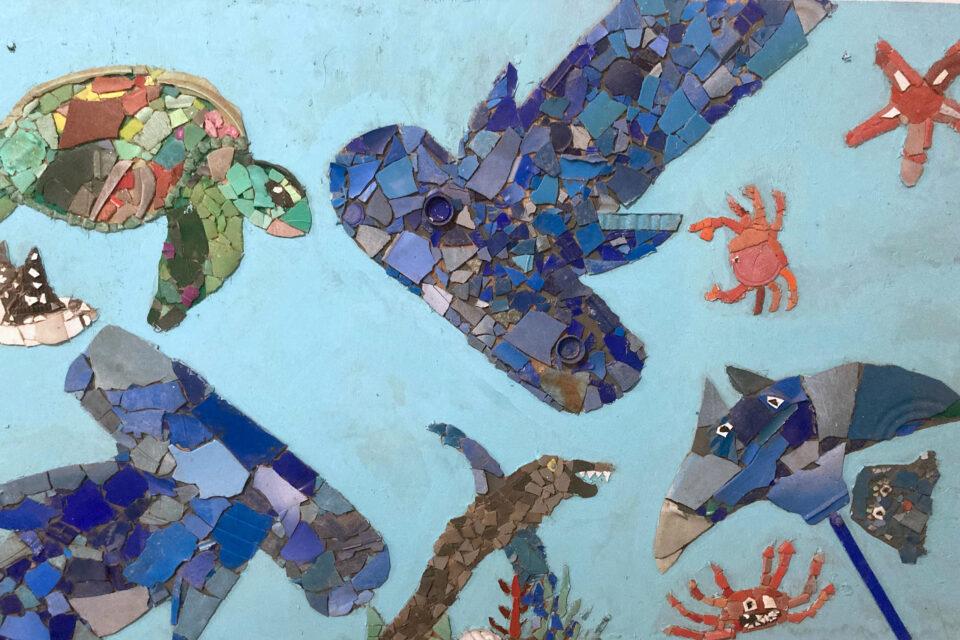
Creating a circular economy for plastics in Galapagos
